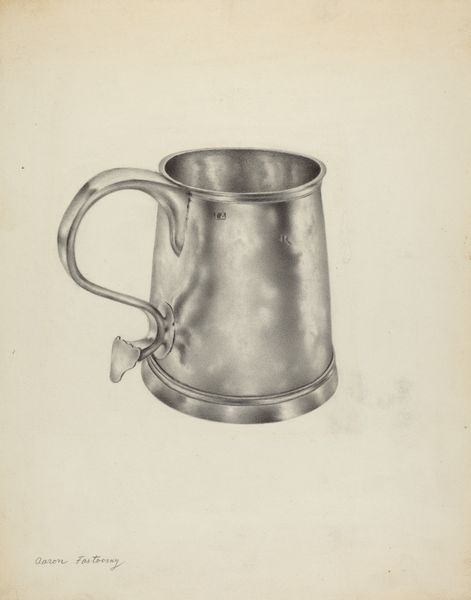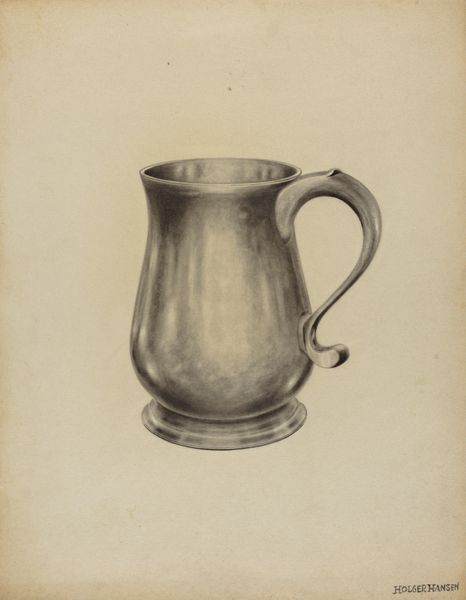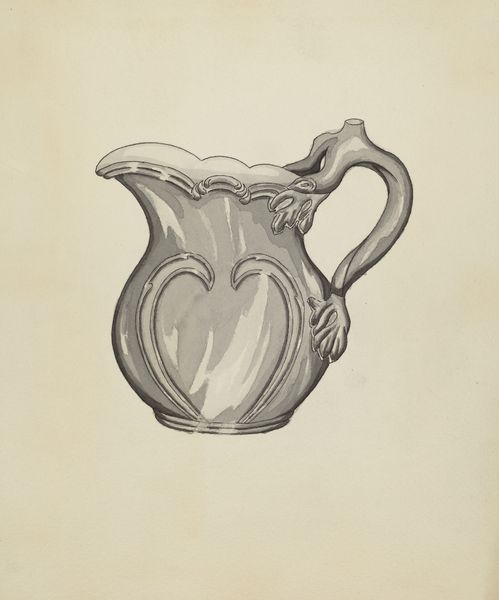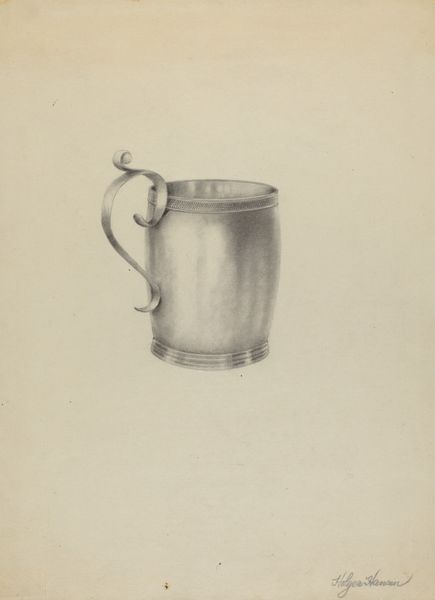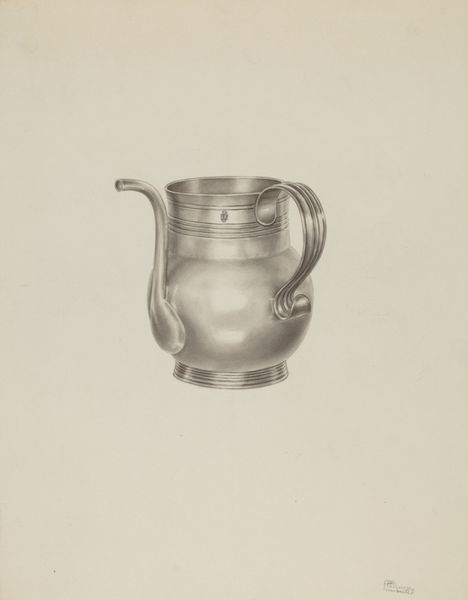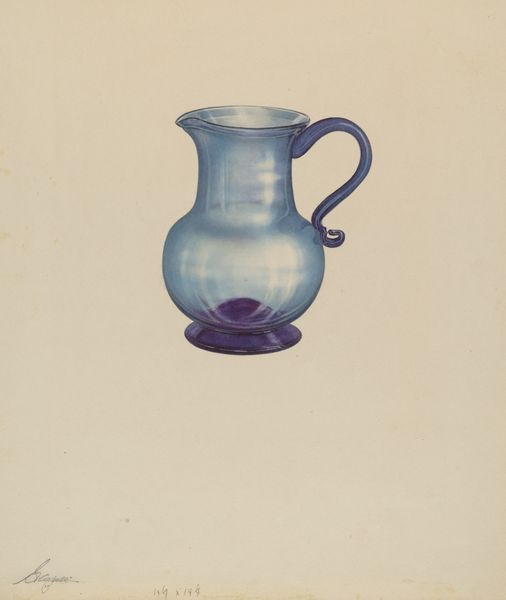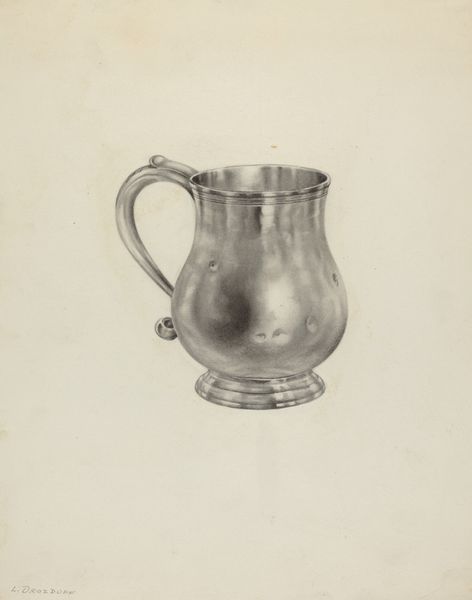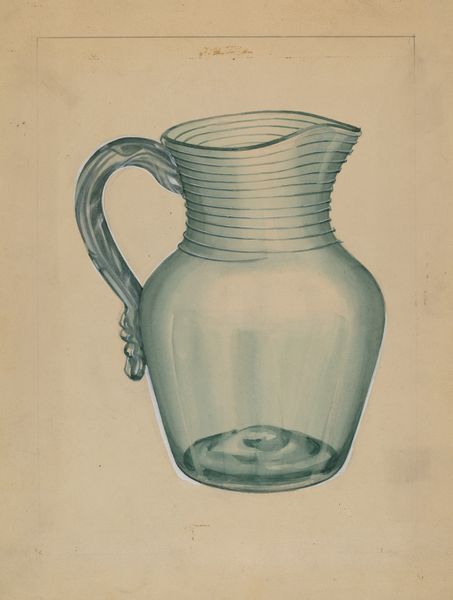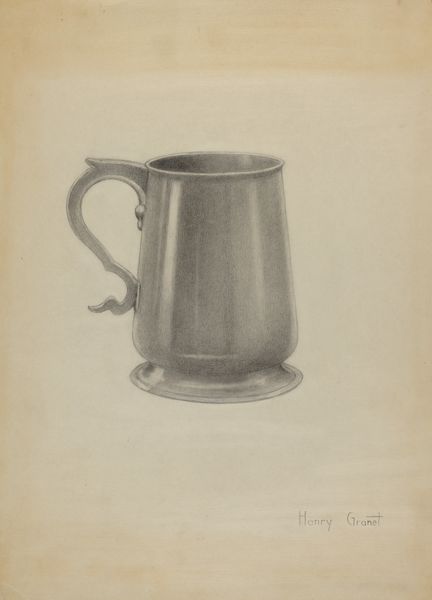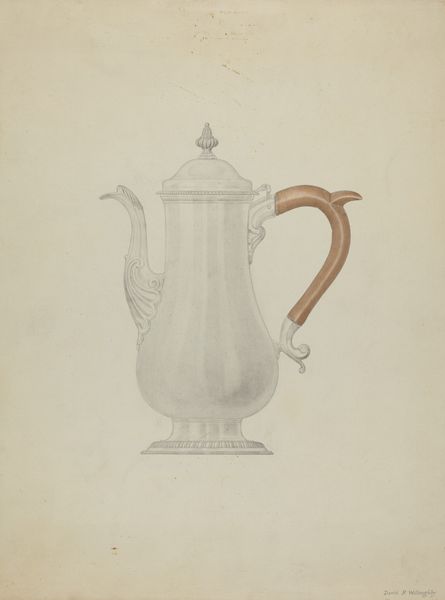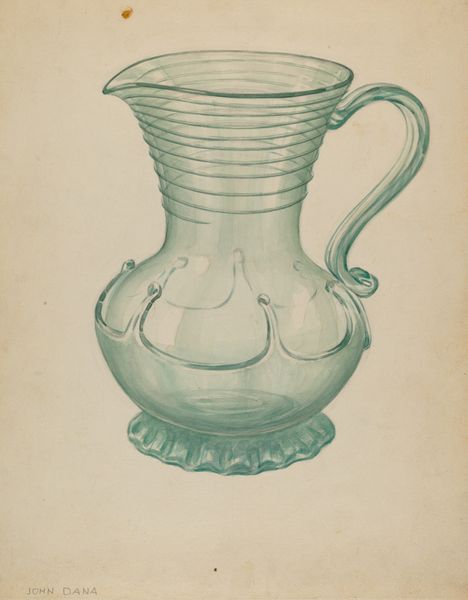
drawing, pencil
#
pencil drawn
#
drawing
#
pencil drawing
#
pencil
#
realism
Dimensions: overall: 29.6 x 22.7 cm (11 5/8 x 8 15/16 in.) Original IAD Object: 5" high
Copyright: National Gallery of Art: CC0 1.0
Curator: Standing before us is "Silver Pitcher," a drawing rendered in pencil by Michael Fenga between 1935 and 1942. Editor: It's deceptively simple, isn't it? At first glance, just a sketch of a commonplace object, but the rendering of the light and shadow is remarkably evocative, lending a sense of quiet dignity. Curator: Indeed. But what are we to make of something so...domestic, created during a period marked by immense social and political upheaval? What narrative is Fenga constructing by focusing on this single object? Perhaps an investigation into the aesthetic value attributed to such pieces through the eyes of class? Editor: Precisely. A materialist perspective demands we look beyond mere representation. The very act of rendering a silver pitcher in pencil invites a consideration of value, both intrinsic and assigned. Silver, a valuable material often associated with wealth and status, is here depicted through a humble medium. What labour went into the making of this silver? Whose hands shaped it, polished it? Curator: The etching featuring what appears to be a monogram suggests a specific owner, potentially obscuring a larger cultural significance by highlighting individuality.. We must acknowledge how representations like this are intertwined with socio-economic systems of power. And what did this vessel contain? What ceremonies and relationships did it sustain? Editor: The means of production matter just as much as what's depicted! Think about the graphite used in the pencil—where did that come from, what were the labor conditions in the mines? The paper too, the pulp, the milling...it’s a complex web of material processes, each imbued with its own social relations. I am struck that this intimate view of something made of refined materials is illustrated so simply using a basic technique. Curator: I agree that investigating the physical origins and socio-economic elements which underpin the object as a motif is crucial. By framing our analysis in such a way, the artistic gesture is imbued with purpose; it offers critical agency. Editor: Absolutely. By examining both the silver and the pencil, we peel back layers of consumption, craft and hidden social histories. Curator: Thinking through the broader implications definitely deepens our perspective. Editor: It truly highlights how intertwined art is with the material realities of the world.
Comments
No comments
Be the first to comment and join the conversation on the ultimate creative platform.
